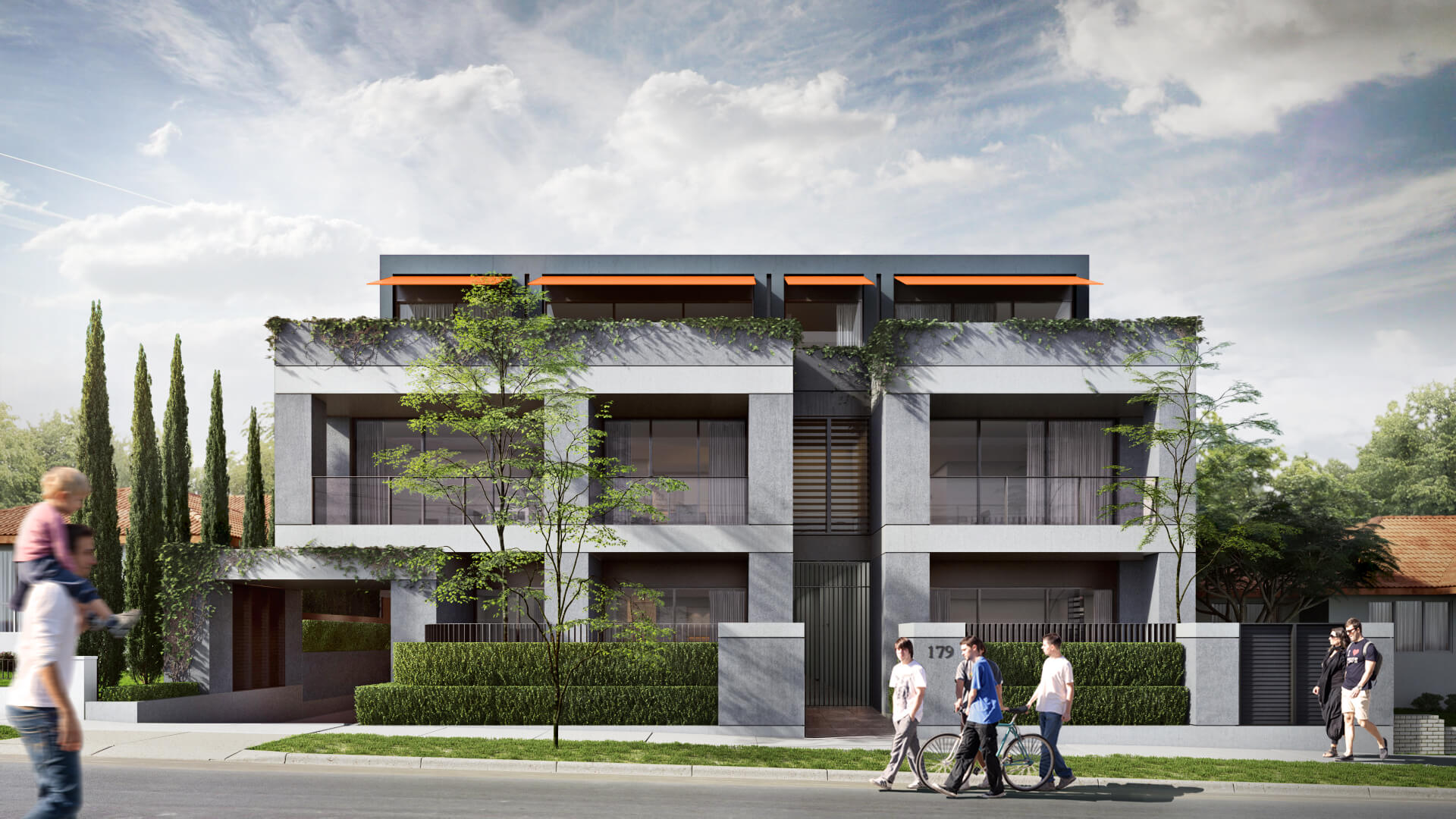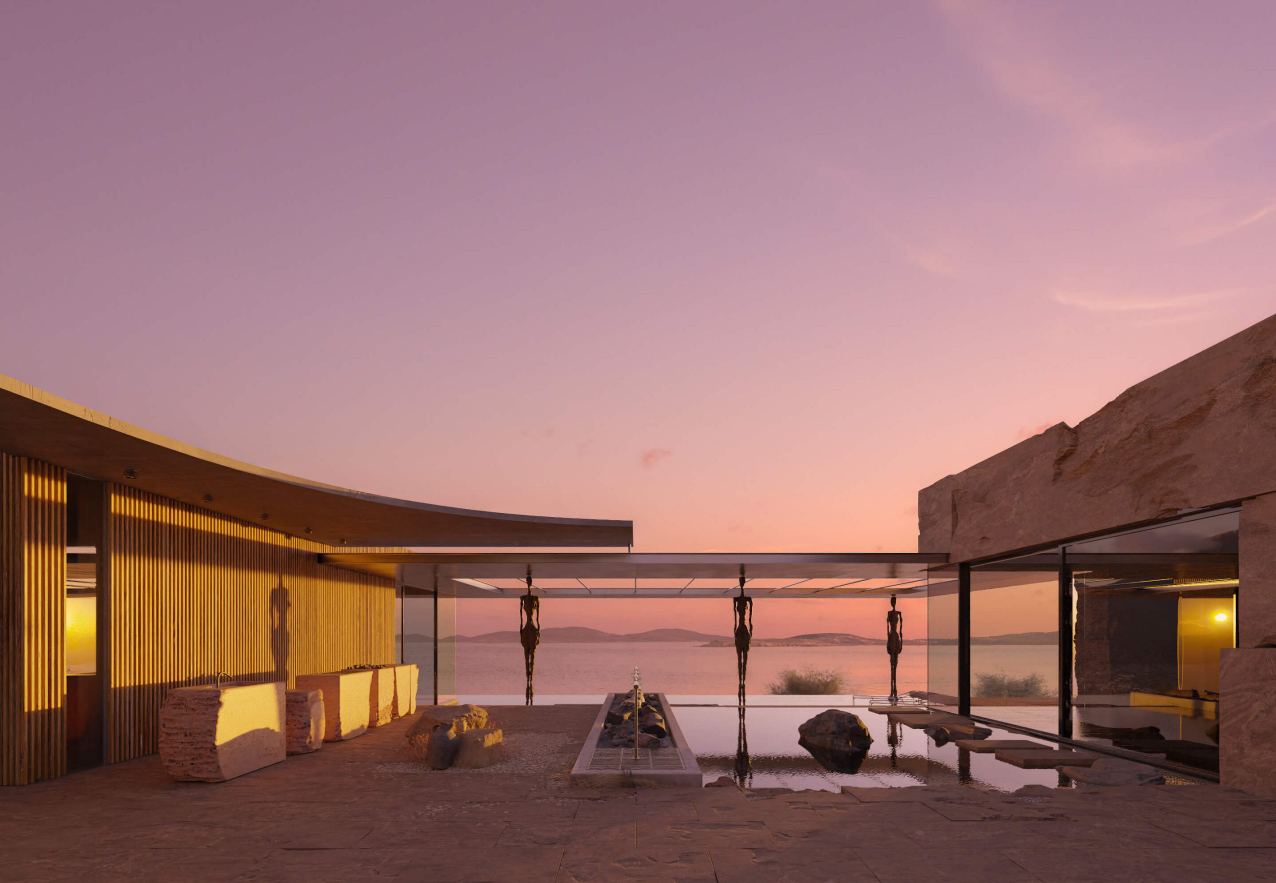3D architectural animation is a powerful tool to present a project. It can make clients obsessed with what they see and understand at once the benefits of the offer. Animated CGI provides a photorealistic simulation of the future building in motion, interior and exterior. In many cases, it builds upon detailed 3D interior rendering to make indoor spaces look both realistic and emotionally engaging. And this excites viewers, makes them connect emotionally with what they see. This way, a 3D video enables Architects to make people dream — and seal the deals.
Which is impossible with any other type of presentation materials. Drawings and sketches show the architectural idea only as a scheme. Physical models, in their turn, explain the space and show the building from different perspectives — but creating them requires lots of time and effort. While with 3D animation services, an Architect can get a photoreal digital movie without lifting a finger.
Which makes contacting a 3D architectural visualization company a wise choice. But what if the budget does not require getting a full-blown cg animated spectacle with lighting and weather transitions? Does it mean one should abandon the idea of getting a 3D architectural animation?
Not at all! There is a number of ways an Architect can optimize the cost of a 3D video. To help you out, we’ve interviewed our 3D Artists and are ready to provide you with 5 time-proven and simple ways to reduce the price. Let’s check them out!
#1. Prepare a Detailed Brief
Professional 3D Max architectural rendering always looks breathtaking. However, 3D animation is always subjectively better looking than even the best static architectural 3D renders, because movement in general is more impactful, and photoreal CG animated videos have a jaw-dropping effect. And this is just what you need for convincing someone that a building that exists only on paper is already a landmark worth investing into.
The creation of an architectural project starts with an idea. And to transfer this idea to an 3D Animation Artist’s mind, it’s necessary to compile a detailed design brief. This will spare an Architect unnecessary discussions and corrections, and thus let him save money. And to prepare a good brief, it’s essential to know what it consists of.
So what should a 3D architectural animation include? First, it requires general information about the project: building type, the video’s purpose, target audience, sequence on the frames in the future video, viewpoints and the scenario. Furthermore, it should provide drawings and visual references of mood, textures, and lighting. It’s also important to specify the building type — whether it’s a residential real estate property or commercial space, and describe the surrounding area. Moreover, it is simply vital to comment on the required elements of post production: sounds, tytles, voiceover, weather effects.
#2. Focus on What’s Most Important
Every single second of a 3D architectural video consists of tens of still 3D renders, each adding to the cost of the 3D project. So, if the budget for 3D animation is limited, it is wise to order a short 3D architectural video that focuses only on the key points. Though a lengthy 3D architectural demonstration with scenes showing beautiful surrounding landscapes, different times of the day and seasons is surely appealing, a short 3D animation can do a great job as well.
This way, the viewers they will be able to examine the essence of the project. Namely, they will see building from different perspectives, smart architectural solutions, materials, colour scheme, the way the objects work together, how the space is perceived, and much more. In fact, that is enough to provide a comprehensive understanding of the project and to impress clients.
Ensure your exterior design project leaves a lasting impression and takes your clients’ breath away with stunning visuals.
#3. Ask 3D Animation Artists to Use Ready-made 3D Models

Another way to save on making a 3D demonstration is to allow 3D Animation Artists use some of the 3D models from the studio’s base. Usually, 3D visualization companies have a large number of options for decor elements, furniture items, plants and so on. For example, our 3D architectural rendering studio has more than 47 thousand 3D models available.
This way, a 3D Artist won’t have to model all objects from scratch. He’ll just insert already made pieces into the scenes, which requires less time and therefore money. So, to reduce the price of a 3D architectural animation, the Architect should specify in the brief that he allows using ready-made 3D models for particular details of the footage. A professional architectural animation company will often suggest which assets can be reused without compromising quality.
#4. Take Benefit from Chroma Key Technology

Chroma key, also called “green screen”, is a technology allowing to insert moving figures of real people and animals into 3D animations. That’s how it works: first, a 3D Animation Artist finds a Chroma key video of a person or an animal captured on the green background, performing and acting. There are many such videos in free stocks, so it’s not a problem to find one. Then, the 3D Artist removes the green background and puts the figure into the scene of a 3D architectural animation. This way, there is no need to create people or animals in a 3D movie from scratch, which, of course, reduces the price of the 3D animation services.
However, this technology does not fit every kind of architectural animation. Usage of Chroma key figures is suitable only for frontal views with limited camera movement. So the Architect should ask 3D Animation Artists in advance if it’s possible to use Chroma key for the project in question.
#5. Provide 3D Studio with Ready Materials
Professional 3D Max architectural rendering always looks breathtaking. However, 3D animation is always subjectively better looking than even the best static architectural 3D renders, because movement in general is more impactful, and photoreal CG animated videos have a jaw-dropping effect. And this is just what you need for convincing someone that a building that exists only on paper is already a landmark worth investing into.
Another secret to staying within budget is to provide an architectural animation studio with some ready elements for the animation – like 3D models of the building, aerial videos of the construction site’s surroundings made with a drone. These materials will significantly simplify work for 3D Artists, and, therefore, decrease the cost of 3D video project. And here is why.
When presenting an outdoors real estate project to clients, Architects want to show what the building will look like from all angles, and from the heights, too. For the latter, a 3D Animation Artist will have to model an aerial view scene. But if an Architect takes a drone video of the surroundings and sends it together with the brief, there will be no need to recreate all the trees, roads and hills that are already shown in the drone footage.
#6. Order Beforehand
3D architectural animation services cost more if ordered at the last minute. That is because tough deadlines mean sleepless nights of work for 3D Artists. Not to mention the fact that they cannot postpone other projects they work on. So, the Artists need to arrange things so that everyone get the best quality videos on time — which is a serious challenge. So it is no wonder that urgent orders cost more. To avoid paying extra for a 3D video, one should order it in advance.
These five simple tips can make a big difference in terms of 3D architectural video services price. To get state-of-the-art means for project presentations and stay within budget, it is wise to prepare a detailed brief and to keep 3D animation short. Also, it makes sense to specify that 3D Animation Artists can use Chroma key technology and ready 3D models from the studio’s base. Furthermore, the Architect can provide her brief together with the ready-modelled building and some drone aerial footage – that will sure help decrease the cost. And finally, discussing all the details with the 3D architectural animation studio beforehand will give them enough time to work on the project – and avoid the rush fee. This is especially important when producing 3d rendering for real estate agents who need fast, persuasive visuals to close deals quickly.
Showcase your architectural project like a true work of art, brought to life with cutting-edge AI-powered CGI technology.
Want to get our professional services? Contact ArchiCGI studio and we will provide you with 3D videos that are bound to win hearts and minds of your clients.

Catherine Paul
Content Writer, Editor at ArchiCGI
Catherine is a content writer and editor. In her articles, she explains how CGI is transforming the world of architecture and design. Outside of office, she enjoys yoga, travelling, and watching horrors.



